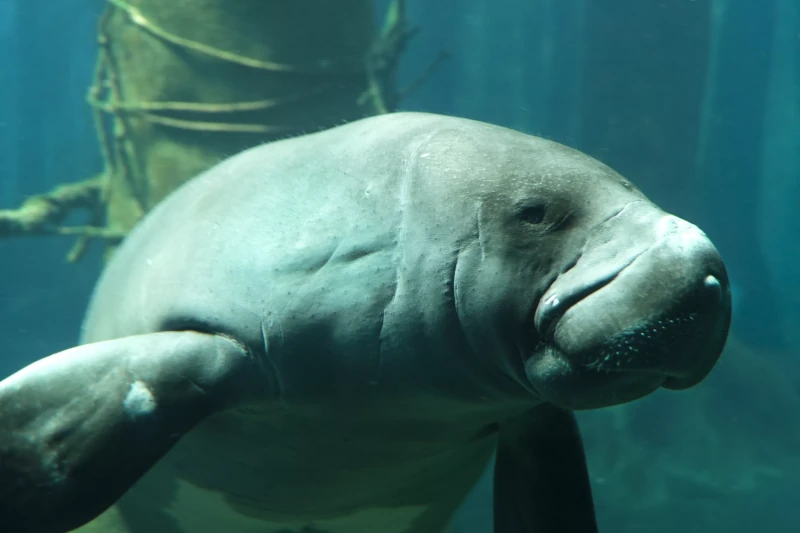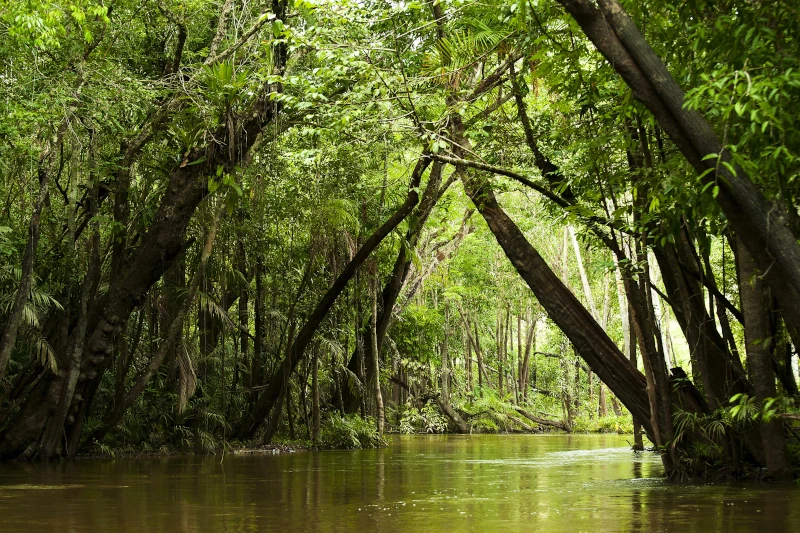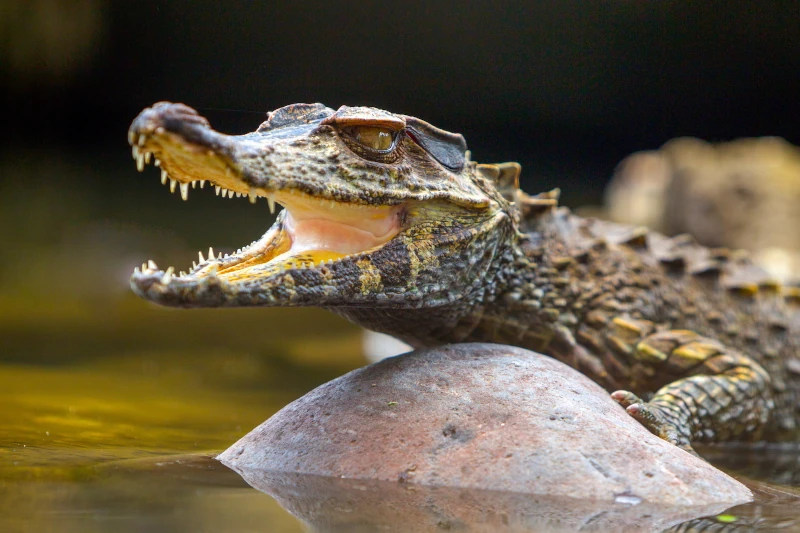The Amazon River is more than just a massive body of water winding through South America; it’s the very essence of life for the ecosystems and communities it touches. Stretching over 4,000 miles, this river is a marvel of nature, home to a remarkable diversity of flora and fauna, and a significant cultural symbol for the indigenous peoples of the region.
In this article, we’ll delve into the wonders of the Amazon River, exploring its vibrant wildlife, the lush plant life, and the cultural significance it holds. Whether you’re a corporate executive planning a rejuvenating getaway, a freelance photographer on the hunt for stunning vistas, or an academic researcher seeking comprehensive insights, we’ve got you covered.
The Amazon River is a sanctuary for an astonishing array of wildlife, where creatures great and small thrive in the dense rainforests and expansive waters. From the stealthy predators that rule the jungle to the gentle giants of the river, the Amazon’s wildlife is as diverse as it is captivating.
One of the most enchanting residents of the Amazon is the manatee, also known as the sea cow. These gentle giants glide silently through the waters, feeding on aquatic plants. Manatees are elusive and spotting one can be a magical experience, adding a touch of wonder to any Amazonian adventure.

Manatees are important indicators of the ecosystem’s health. Their presence signals a thriving aquatic environment, as they are sensitive to pollution and changes in water quality. Conservation efforts are underway to protect these creatures, emphasizing the river’s role as a haven for biodiversity.
Equally fascinating are capybaras, the world’s largest rodents, often seen lounging on riverbanks or swimming gracefully. Their social behavior and unique appearance make them a favorite among wildlife enthusiasts and photographers alike.
Capybaras are known for their communal living. They thrive in groups, often seen basking in the sun or grazing on riverbank vegetation. Observing their interactions provides insight into the complex social structures of Amazonian wildlife.
The dense jungles surrounding the Amazon River are home to the elusive jaguar, the largest cat in the Americas. These powerful predators are a symbol of strength and mystery, often inspiring awe and respect among those fortunate enough to catch a glimpse.
Jaguars are top predators, playing a crucial role in maintaining the balance of their ecosystem. They help control populations of other animals, ensuring the health and diversity of the jungle. Their presence is a testament to the Amazon’s vibrant and functioning natural world.
In the waterways, caimans lurk as the apex predators. These relatives of the alligator can be spotted along the riverbanks, their eyes and snouts just above the water’s surface. Observing these creatures in their natural habitat is a thrilling experience.
Caimans are integral to the aquatic food chain, feeding on fish, birds, and small mammals. Their adaptability to different environments highlights the river’s diverse habitats, from slow-moving tributaries to bustling main channels.

The Amazon River in Peru is famous for its pink dolphins, also known as boto or Amazon river dolphins. Their playful nature and distinctive coloration make them a must-see for anyone exploring the river. Watching them leap gracefully out of the water is a sight to behold.
Pink dolphins are surrounded by local legends and myths, often seen as mystical creatures with transformative powers. Their unique pink hue, which can vary with age and environment, adds to their allure and mystique.
Giant Otters, particularly the giant river otters, also call the Amazon their home. These social and vocal animals are often seen in family groups, playing and hunting together. Their antics provide endless entertainment and photo opportunities.
Giant river otters are apex predators in their own right, skilled at hunting fish and other aquatic creatures. Their presence is a sign of a healthy ecosystem, and conservationists are working to ensure their survival amidst growing environmental pressures.
The Amazon’s wildlife and plants life is a rich tapestry of biodiversity, underpinning the health and vitality of the entire region. From towering Rainforest trees to delicate flowers, the flora of the Amazon jungle is a constant source of wonder and scientific inquiry.
The Amazon is a botanical wonderland, boasting an array of plants in the tropical forest found nowhere else on Earth. From towering trees that form the rainforest canopy to exotic flowers and medicinal plants, the diversity is staggering. The lush greenery is not just beautiful to behold but essential for the planet’s health, acting as a crucial carbon sink.
The Amazon’s canopy is a world unto itself, teeming with life. It’s home to countless species that never touch the ground, each playing a role in the intricate web of life. The canopy’s structure and function are vital for biodiversity and climate regulation.
The rainforest floor is a realm of mystery and discovery, where new plant species are continually being identified. Researchers are particularly interested in the medicinal properties of Amazonian plants, many of which hold potential for modern medicine.
The Madre de Dios and Tambopata regions, in particular, are known for their extraordinary biodiversity. These areas are rich with unique species and provide a fertile ground for research and exploration.

Efforts to preserve the Amazon’s unique ecosystem have led to the establishment of numerous national reserves. These protected areas, some recognized by UNESCO, play a vital role in conserving the diverse wildlife and plant species that inhabit this region.
National reserves are crucial for safeguarding the Amazon’s environmental heritage. They provide a sanctuary for endangered species and help maintain the ecological balance of the region.
Visiting these reserves offers a chance to witness conservation efforts firsthand and appreciate the delicate balance of nature.
The reserves also serve as living laboratories for scientists and researchers, offering invaluable opportunities to study the complex dynamics of the rainforest. Conservationists work tirelessly to address challenges such as deforestation, climate change, and habitat loss.
Exploring the Amazon is an adventure like no other, offering unique experiences and challenges. Proper preparation and understanding of the region are essential for a successful journey.
Planning a trip to the Amazon requires some preparation, but the rewards are well worth the effort. A detailed map of the river and its surroundings is essential for navigating this vast and complex ecosystem. Maps not only help in planning logistics but also enhance your understanding of the region’s geographical and cultural layout.
Maps of the Amazon are more than navigational tools; they are gateways to discovery. They offer insight into the river’s tributaries, indigenous communities, and diverse habitats.
Understanding the cultural landscape is crucial for travelers. Maps can guide you to ancient sites, local villages, and cultural landmarks, enriching your Amazonian experience.
For corporate executives with limited time, a well-organized itinerary is crucial. Consider guided tours that offer comprehensive experiences, allowing you to maximize your leisure time. Many tours provide a blend of comfort and adventure, ensuring a hassle-free experience that meets high standards.
Guided tours offer insider knowledge and access to remote areas, providing a deeper understanding of the Amazon’s wonders. Expert guides share stories, history, and insights that enrich your journey.
Freelance photographers will find the Amazon a treasure trove of picturesque locations. From the dynamic interplay of light and shadow in the dense jungle to the vibrant colors of wildlife, the opportunities for capturing stunning images are endless. Insider tips on the best times and places to shoot can elevate your photographic storytelling.

Photographers can benefit from workshops and tours tailored to their interests, gaining unique perspectives and techniques. Engaging with local communities can also provide authentic cultural contexts for your work.
Academic researchers will benefit from the rich cultural insights available in the Amazon. Engaging with local communities provides a deeper understanding of the region’s history and customs, enriching your research journey.
Researchers can collaborate with local experts and institutions, gaining access to invaluable knowledge and resources. Fieldwork in the Amazon offers unparalleled opportunities for groundbreaking discoveries and contributions to science.
The Amazon River in Peru is more than a geographical feature; it’s a lifeline that sustains a wealth of biodiversity and cultural heritage. Whether you’re seeking relaxation, inspiration, or knowledge, this magnificent Tambopata river and its surroundings offer something for everyone.
Embrace the allure of the Amazon and embark on a journey that promises unforgettable experiences and profound connections with nature and culture. The river’s timeless beauty and resilience inspire awe and respect, reminding us of our interconnectedness with the natural world.
Embark on this once-in-a-lifetime adventure and get the most of your Amazon tour truly is the lifeblood of South America. Its mysteries and marvels await, offering endless possibilities for exploration and discovery.